Taliban selfies: Why militants posed for photos in Kunduz
- Published
The Afghan Taliban long ago perfected the art of propaganda. But as BBC Afghan's Mohammad Zahid explains, Monday's assault on Kunduz gave them the opportunity to show themselves in real time mingling on the streets.
As much as prisoners rushing out of unlocked jails, the Taliban posing for just a few selfies on the streets is one of the most striking and revealing moments of the assault on Kunduz.
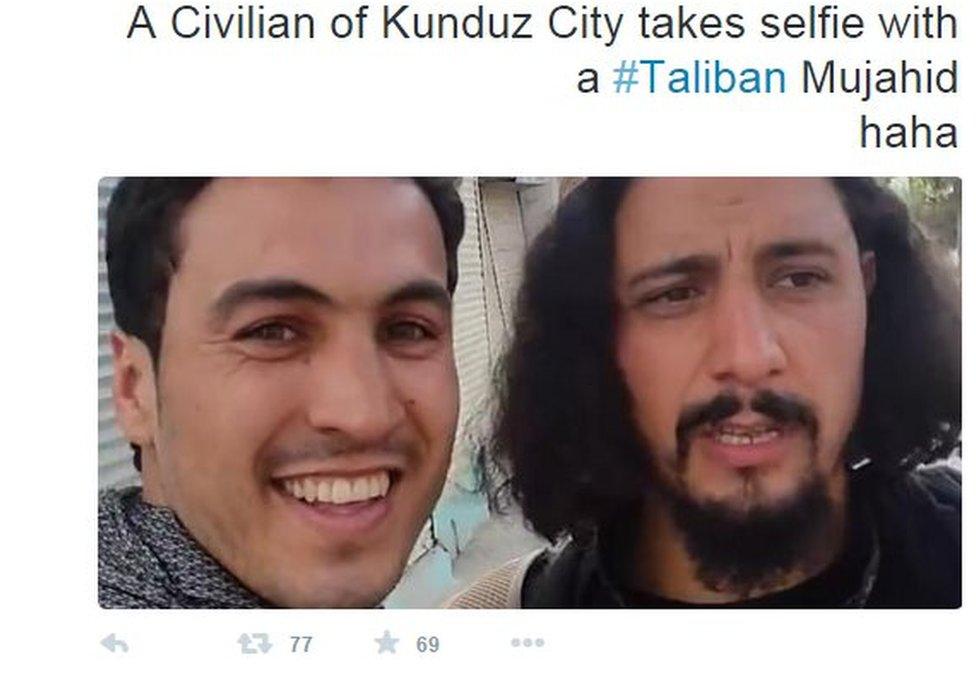
The image, posted on a militant-affiliated Twitter account, was also shared widely but elsewhere residents have been talking of their fear in the city.
The Taliban have an active Facebook and Twitter presence, they even disseminate addictive chants on mobile phones, but this is the first time they have exhibited this kind of behaviour on the streets.
Many will be young foot soldiers who have seen little success until now and they are in the business of trying to show a different side to their fighting spirit, having learned the lessons of the past. Their euphoria is unlikely to last as the militants are likely to be overwhelmed by the Afghan security forces backed up by coalition air strikes.
Nevertheless, the Taliban released one statement and two news updates on Monday tracking their takeover of Kunduz on their propaganda website Voice of Jihad. They have also continued to release video and audio clips.
Flags across the cities
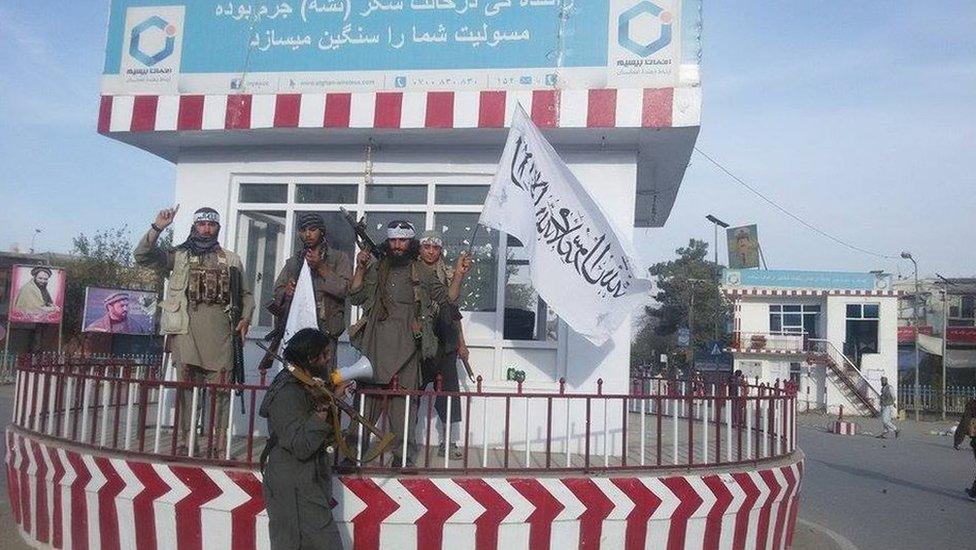
Several fighters, including Taliban spokesman Zabihullah Mujahid, posted pictures of Taliban members with their white flag at various points in the city to show their dominance, and the inevitable celebratory and victory images.
They are trying to depict a softer image of a Taliban fighter and the new leader's statement was at pains to "reassure" the people of Kunduz. Just as the sudden assault on Kunduz is likely to be connected with his coming to power so is this approach to social media.

Taliban spokesman Zabihullah Mujahid released this image of militants in a presumably seized police car.
Such messages are being used to convey an impression of strength, using the latest, most pop culture of social media tools. In a country where many people have multiple phones, Afghans are huge users of social media.
But a Taliban social media propaganda strategy will find it hard to change minds after the freedoms people have experienced over the last decade.
There is huge opposition to the Taliban so part of this is about acting as if that opposition simply does not exist. They are trying to gain public support and people's sympathy. They posed for the journalists, knowing the pictures would be disseminated.
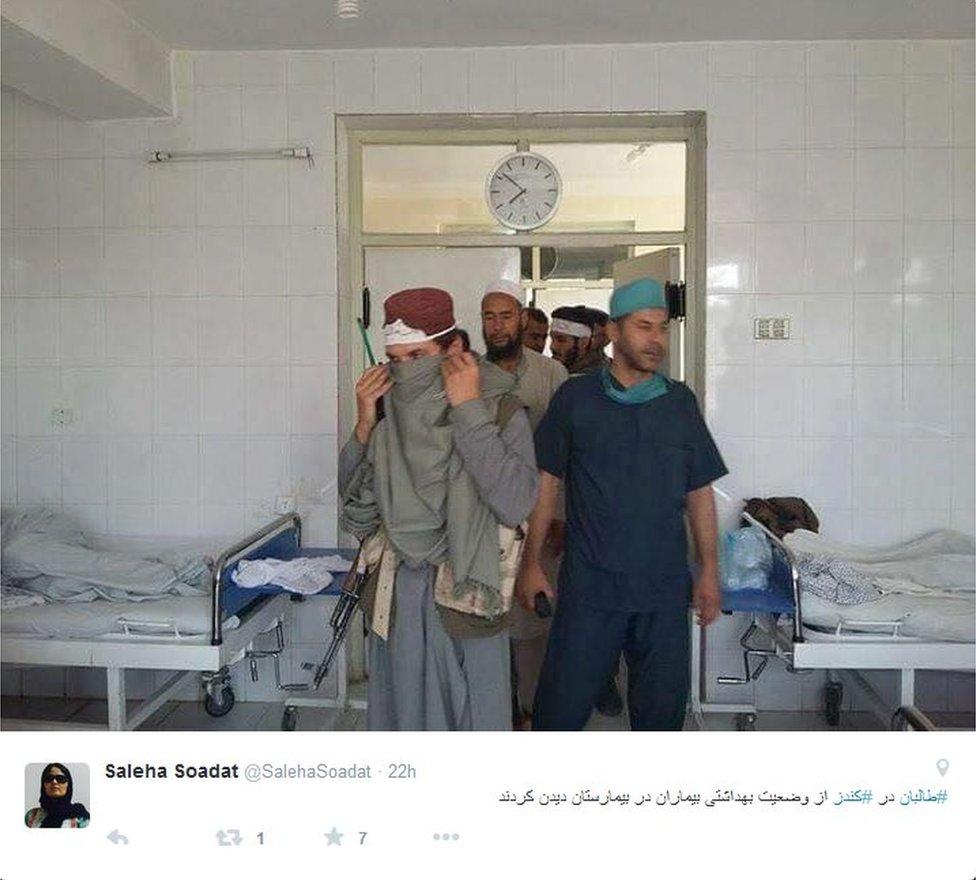
Tolo News reporter Saleha Soadat also documented the invasion of a hospital by Taliban fighters.
What the pictures also do not tell is how the bystanders in these images feel. They may pose for selfies, but this is a group which has forced its way into the city and there is fear everywhere and bloodshed and chaos too.
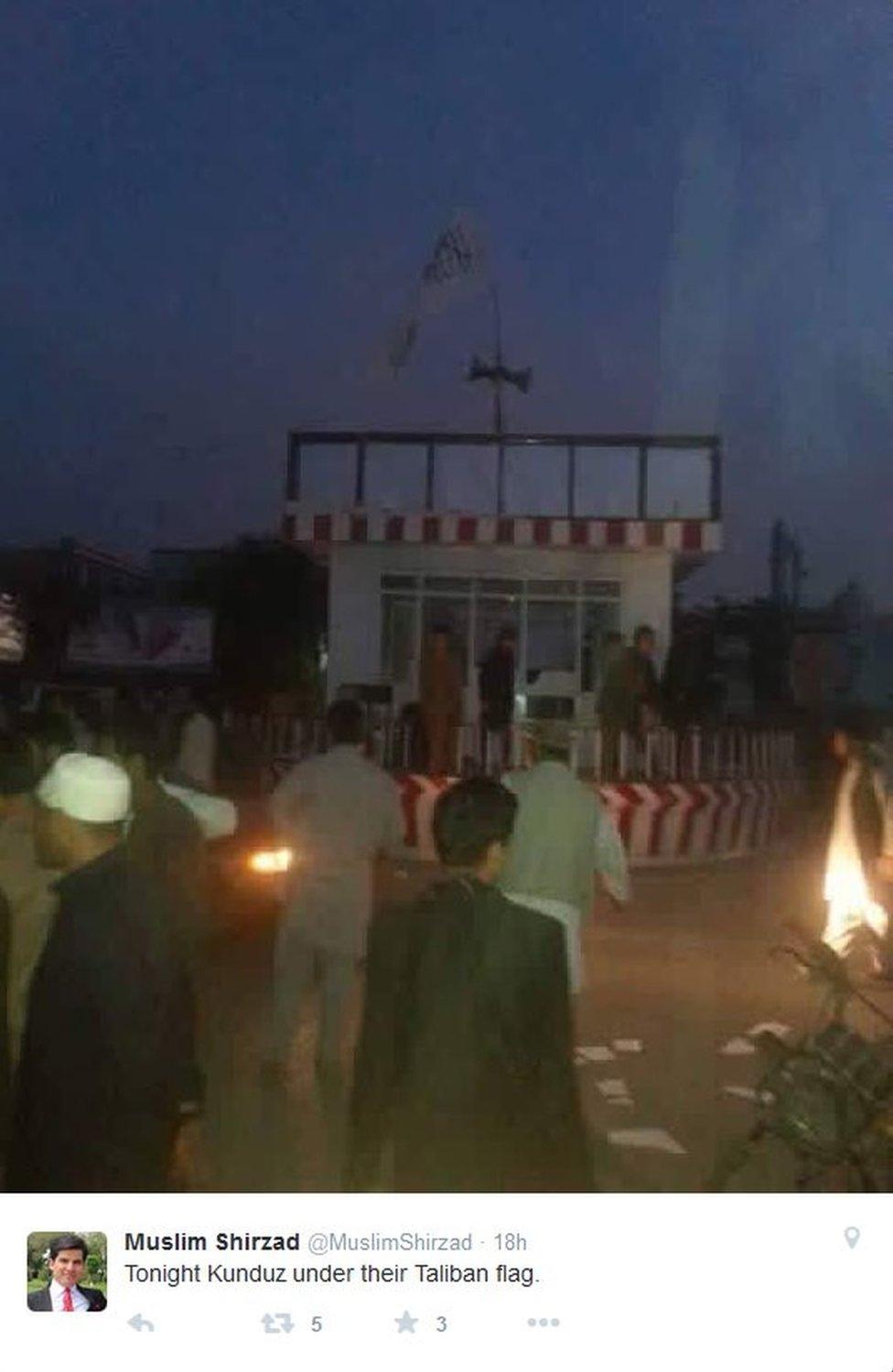
The flag-hoisting was documented by several Afghan reporters on the scene, including Afghan news presenter Muslim Shirzad of Tolo News.
That is also reflected in tweets coming out of the city. People have described their fear, one person in the city described how a member of their family was killed when a rocket hit their home.
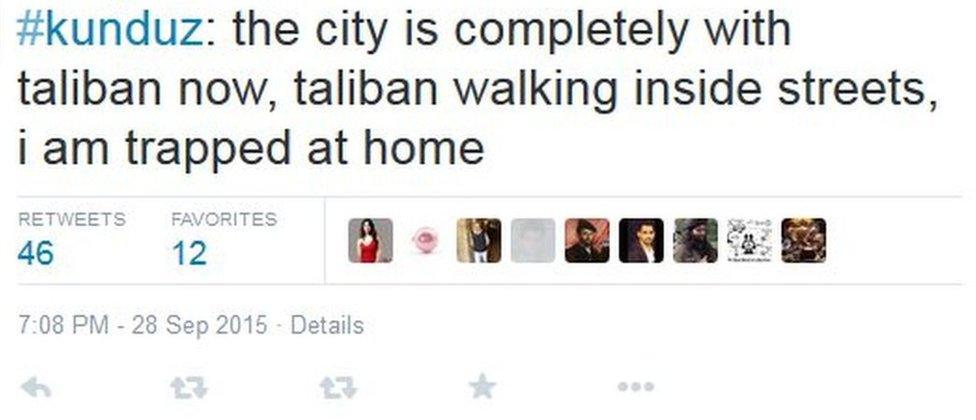
Pictures from residents also showed the exodus of civilians from the city. As most analysts believe the Taliban won't be able to hold onto the city, so much of this flurry is about savouring the moment for as long as they can.

The intention may be to project an image of relaxed victory, but residents feel the atmosphere is ominous and the contrast is both awkward and painful.
Whatever tactics the Taliban adopt, the symbolic takeover will only remind Afghans of their harsh rule when they barred women from education, stoned women and lashed men in public.